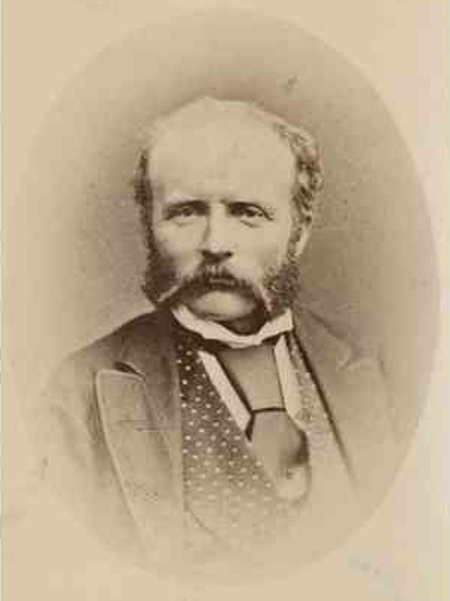William Tietkens on:
[Wikipedia]
[Google]
[Amazon]

 William Harry Tietkens (30 August 1844 – 19 April 1933), known as "Harry Tietkens", explorer and naturalist, was born in England and emigrated to Australia in 1859.
Tietkens was second in command to
William Harry Tietkens (30 August 1844 – 19 April 1933), known as "Harry Tietkens", explorer and naturalist, was born in England and emigrated to Australia in 1859.
Tietkens was second in command to
William Harry Tietkens, BiographyDeath of Tietkens (Trove: The Argus Melbourne 20 April 1933)Tietkens Explorer and Pioneer (Trove:Sydney Morning Herald 27 Dec 1930)
(at Flinders University Library) {{DEFAULTSORT:Tietkens, William Explorers of Australia 1844 births 1933 deaths

Ernest Giles
William Ernest Powell Giles (20 July 1835 – 13 November 1897), best known as Ernest Giles, was an Australian explorer who led five major expeditions to parts of South Australia and Western Australia.
Early life
Ernest Giles was born in Bris ...
on expeditions to Central Australia
Central Australia, also sometimes referred to as the Red Centre, is an inexactly defined region associated with the geographic centre of Australia. In its narrowest sense it describes a region that is limited to the town of Alice Springs and i ...
in 1873 and on a journey from Beltana, South Australia
Beltana is a town north of Adelaide, South Australia. Beltana is known for continuing to exist long after the reasons for its existence had ceased. The town's history began in the 1870s with the advent of copper mining in the area, construction ...
to Perth, Western Australia
Perth is the capital and largest city of the Australian state of Western Australia. It is the fourth most populous city in Australia and Oceania, with a population of 2.1 million (80% of the state) living in Greater Perth in 2020. Perth is ...
in 1875.
In 1889 Tietkens led his own expedition west of Alice Springs
Alice Springs ( aer, Mparntwe) is the third-largest town in the Northern Territory of Australia. Known as Stuart until 31 August 1933, the name Alice Springs was given by surveyor William Whitfield Mills after Alice, Lady Todd (''née'' Al ...
to the vicinity of the Western Australian border. This expedition discovered Lake Macdonald
Lake Macdonald (Pintupi dialect, Pintupi: Karrkurutinyja) is an ephemeral lake that straddles the border between Western Australia and the Northern Territory. It lies south of Lake Mackay, and south-west of Kintore, Northern Territory. Lying in c ...
, the Kintore Range, Mount Leisler
Mount Leisler is the highest point in the Kintore Range in the south-west of the Northern Territory of Australia. Its elevation is .
Location and features
Mount Leisler was named by William Tietkens on 27 May 1889. Tietkens was in command of t ...
, Mount Rennie, the Cleland Hills, defined the western borders of Lake Amadeus
Lake Amadeus (together with Lake Neale, Pitjantjatjara: ''Pantu'' ("salt lakes")) is a large salt lake in the southwest corner of Northern Territory of Australia, about north of Uluru. The smaller Lake Neale is adjacent to the northwest. It ...
, and photographed Uluru
Uluru (; pjt, Uluṟu ), also known as Ayers Rock ( ) and officially Gazette#Gazette as a verb, gazetted as UluruAyers Rock, is a large sandstone geological formation, formation in the centre of Australia. It is in the southern part of the ...
(Ayers Rock) and Kata Tjuta
Kata Tjuṯa / The Olgas (Pitjantjatjara: , lit. 'many heads'; ) is a group of large, domed rock formations or bornhardts located about southwest of Alice Springs, in the southern part of the Northern Territory, central Australia. Uluṟu / Aye ...
(Mount Olga) for the first time. The expedition collected new species of plants and rock samples allowing the South Australian government geologist
A geologist is a scientist who studies the solid, liquid, and gaseous matter that constitutes Earth and other terrestrial planets, as well as the processes that shape them. Geologists usually study geology, earth science, or geophysics, althou ...
to compile a 'geological sketch' of the country traversed. Tietkens was elected a fellow of the Royal Geographical Society
The Royal Geographical Society (with the Institute of British Geographers), often shortened to RGS, is a learned society and professional body for geography based in the United Kingdom. Founded in 1830 for the advancement of geographical scien ...
on his return. Specimens of 250 plant species were collected, although only 8 were new to science, and in 1890, Ferdinand von Mueller
Baron Sir Ferdinand Jacob Heinrich von Mueller, (german: Müller; 30 June 1825 – 10 October 1896) was a German-Australian physician, geographer, and most notably, a botanist. He was appointed government botanist for the then colony of Vict ...
and Ralph Tate
Ralph Tate (11 March 1840 – 20 September 1901) was a British-born botanist and geologist, who was later active in Australia.
Early life
Tate was born at Alnwick in Northumberland, the son of Thomas Turner Tate (1807–1888), a teacher of math ...
named '' Eremophila tietkensii'' in his honour.
Tietkens later worked for the New South Wales
)
, nickname =
, image_map = New South Wales in Australia.svg
, map_caption = Location of New South Wales in AustraliaCoordinates:
, subdivision_type = Country
, subdivision_name = Australia
, established_title = Before federation
, es ...
Department of Lands as a surveyor
Surveying or land surveying is the technique, profession, art, and science of determining the terrestrial two-dimensional or three-dimensional positions of points and the distances and angles between them. A land surveying professional is ca ...
from 1891 until his retirement in 1909. He died at Lithgow, New South Wales
Lithgow is a town in the Central Tablelands of New South Wales, Australia and is the administrative center of the City of Lithgow local government area. It is located in a mountain valley named Lithgow's Valley by John Oxley in honour of Wil ...
.
See also
* Tietkens expedition of 1889References
External links
William Harry Tietkens, Biography
(at Flinders University Library) {{DEFAULTSORT:Tietkens, William Explorers of Australia 1844 births 1933 deaths